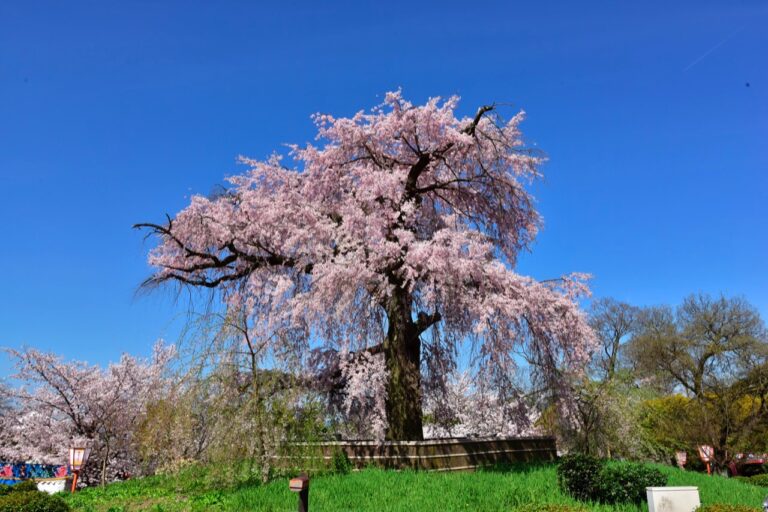
Introducing the highlights of [Maruyama Park] where the beauty of the four seasons spreads...
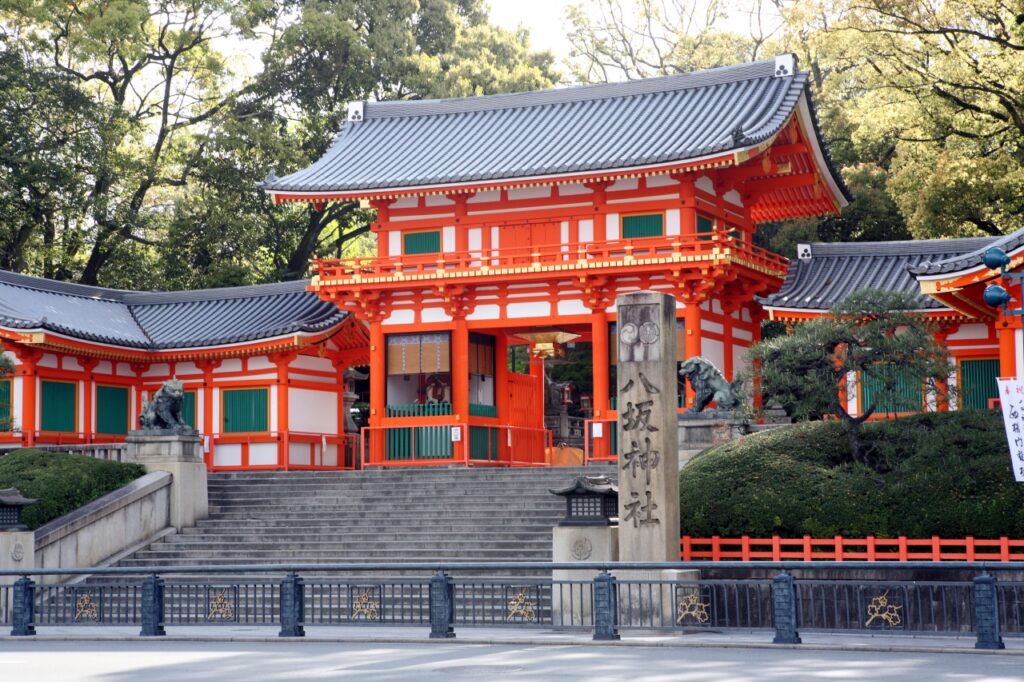

Yasaka Shrine, located at the end of Shijo Street in Kyoto, is the head shrine of the Gion faith, which has approximately 2,300 shrines throughout Japan. The main deity is Susanoo-no-Mikoto, and many of the buildings, including the main shrine, a national treasure that retains the architectural style of the Heian period, the west tower gate and the stone torii gate, are designated as national treasures or important cultural properties. Beloved as "Gion-san," the shrine is also known for the "Gion Festival" held every July. In this issue, we have taken a deeper look at the highlights of this "Gion-san.
According to shrine tradition, there are two theories about the origin of Yasaka Shrine. One is that Irisi, who came to Japan in 656 (2nd year of the Emperor Saimei's reign), enshrined Susanoo-no-Mikoto (Susanoo-no-Mikoto). The other is that Ennyo, a priest, built a hall in 876 (Jougan 18), and in the same year, the god descended to the Gion forest. After that, the shrine became famous as [Gion Shrine] for quelling plague and disease, and was added to the 21 shrines revered as a shrine for the protection of the royal castle.
[The Nishiroumon gate, the symbol of Yasaka Shrine and the place where many people come and go, is the oldest building on the premises, built in 1497, and is designated as an important cultural property. In fact, it was located a little more to the southwest before the Taisho era (1912-1926).
It was moved to its present location when Shijo Street was widened in 1953 when the streetcar line was opened. A stone monument is placed at the site of the old gate, so look for it.
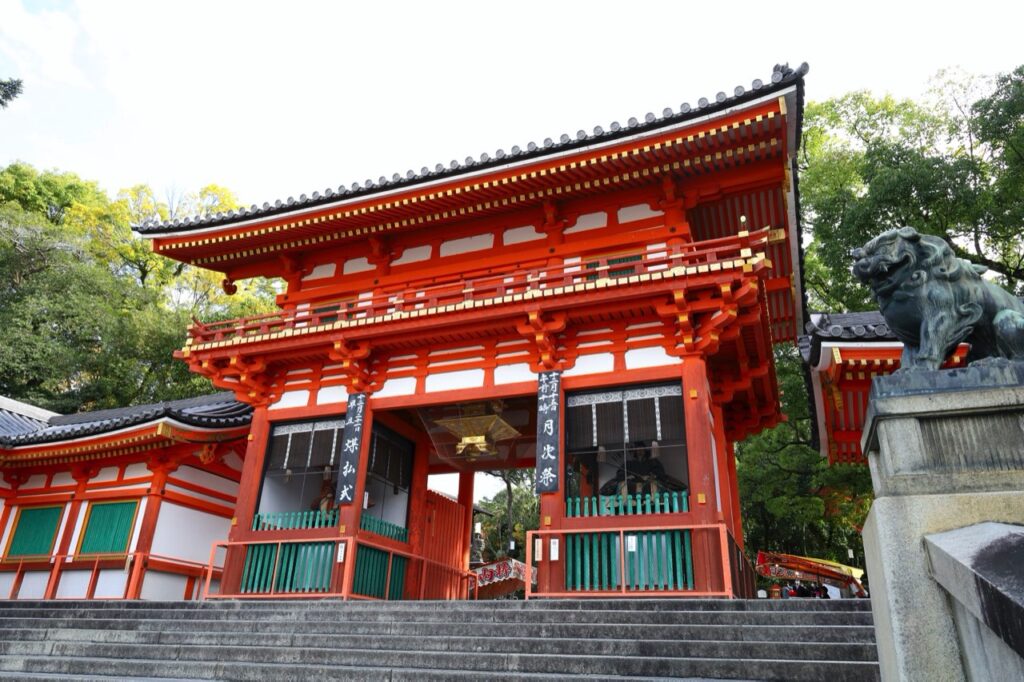
The West Tower Gate, a symbol of Gion

The shrine had been called "Gion-sha" or "Gion-kanshin-in" before the Meiji era (1868-1912), but the name was changed from Buddhist to "Yasaka-sha" due to the Meiji government's policy of separating Shinto and Buddhist shrines and temples. The name "Yasaka" comes from the fact that this area was once called "Yasaka-go. One of the stone lanterns in the precincts of the shrine bears the inscription "Gion Shrine" and the stone jar in the west hand-watering basin bears the inscription "Kanshin-in" (Goddess of Mercy Temple).
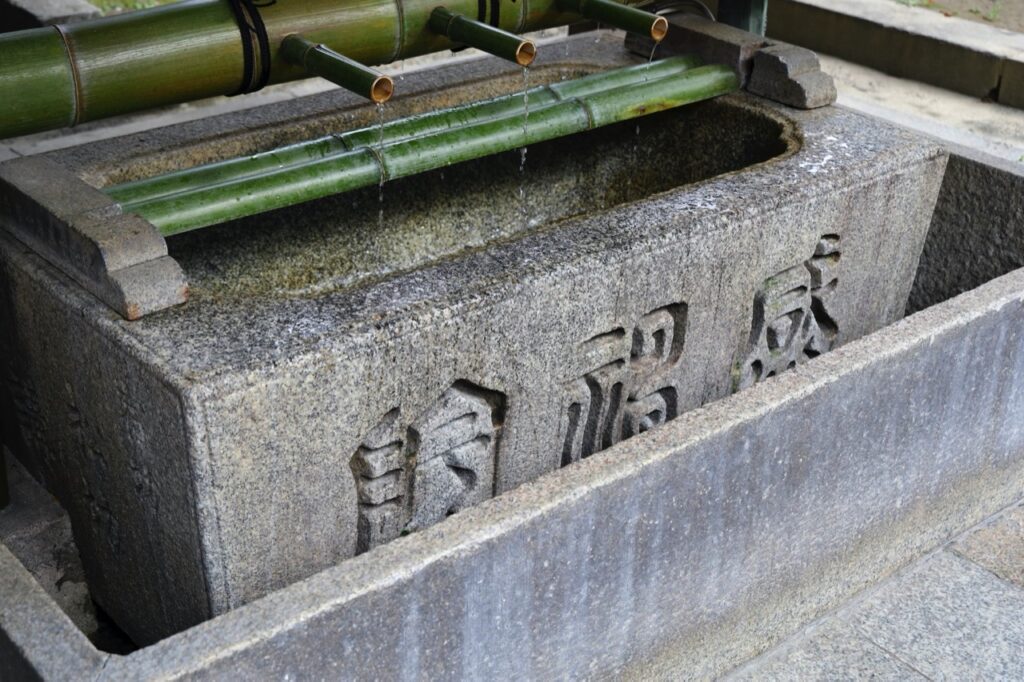
The inscription on the west hand basin reads "Kanshinin-in" (pre-Meiji period).

In the Dajokanpu, a document dated 1070 (Enku 2), it is written, "To the east is Mt. Shirakawa, to the south north of Gojo (Matsubara), to the west the Kamo River, and to the north south of Sanjo", indicating that a much wider area than today was once designated as the precincts of the shrine. Maruyama Park, known for its cherry blossoms, was also once within the precincts of the shrine. It is said that Susanoo-no-Mikoto loved cherry blossoms and composed Takusen-uta (a song of oracle), and many people planted cherry trees in the hope of prosperity, making Maruyama Park the famous cherry blossom spot it is today.
The main hall, a valuable example of Heian-period architecture, was designated as a national treasure in 2020.
The main hall and the worship hall, which used to be separate buildings, are covered by a single large roof, commonly called the "gion-zukuri" structure, and are surrounded by a number of rooms. It is also characterized by the extended eaves on the north, east and west sides of the roof. The roofs of the four auxiliary and subordinate shrines [Mimizensha], [Hiyoshi-sha], [Epidemic Shrine], and [Kitamukai Hirushi-sha] on the site also have the same pattern of eaves as the main shrine.
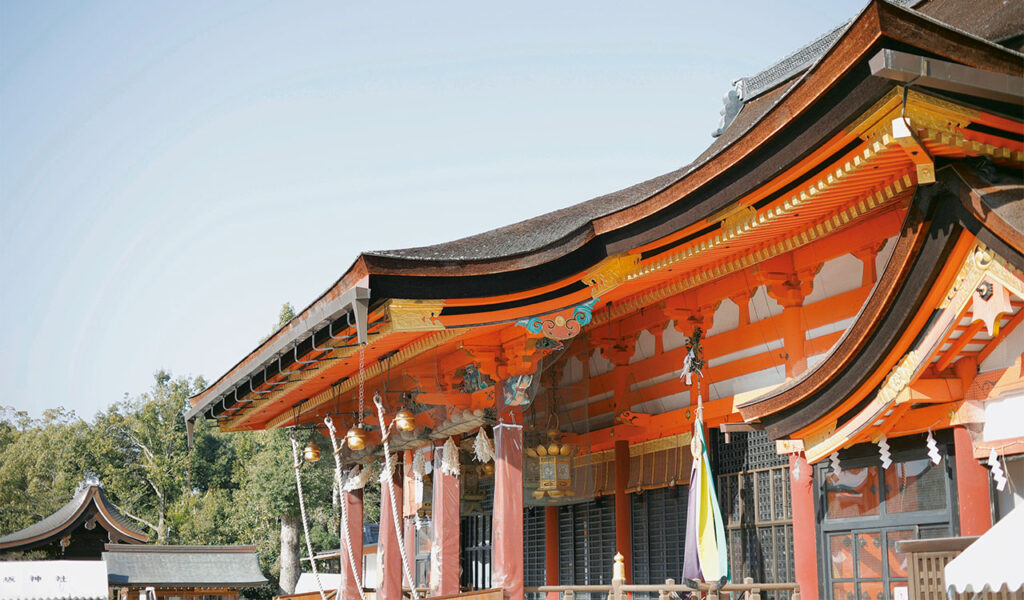
Main Shrine (National Treasure)

Although it is currently plastered over and cannot be seen, there is said to be a pond under the main shrine where a blue dragon is said to live, and it is called "Ryu-ana" (dragon hole).
The suibei, a wall surrounding the east side of the main shrine and the hall of offerings*, is made of unprimed wood. The light blue renji is decorated with beautiful carvings in an arabesque pattern.
*A place to prepare meals offered to the gods during Shinto rituals.
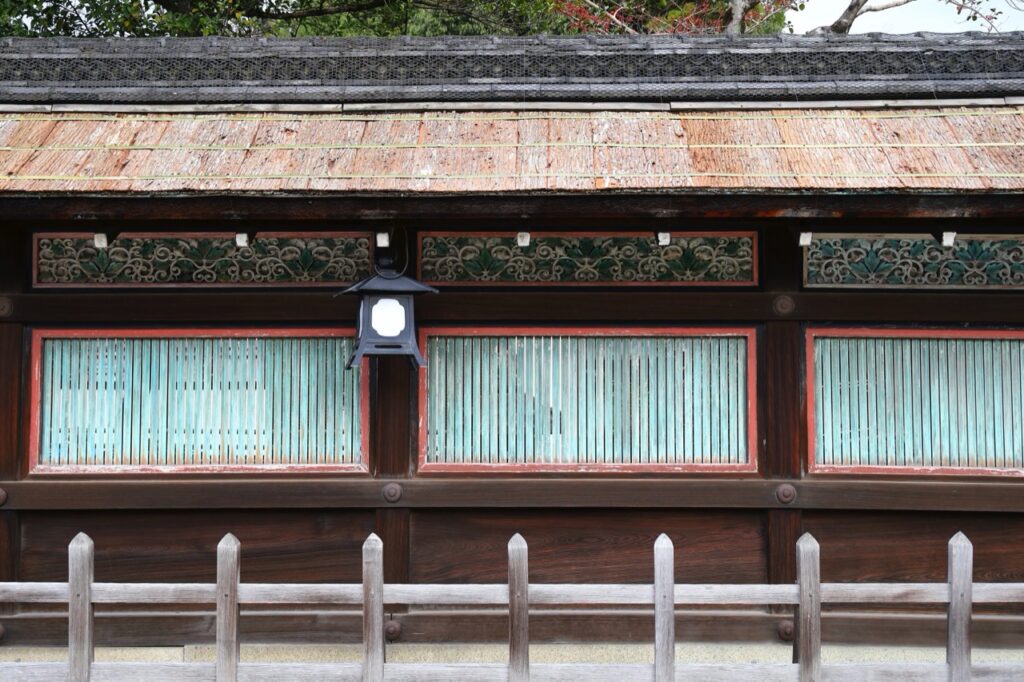
Open-air wall surrounding part of the main shrine

Susanoo-no-Mikoto, known as a rough god, is actually the god of waka poetry, the first to compose a 31-character poem. The poem he composed in Izumo is inscribed on a "poem monument" behind the main shrine.
This poem, composed while thinking of his wife, shows the sensitive side of the usually fierce god.
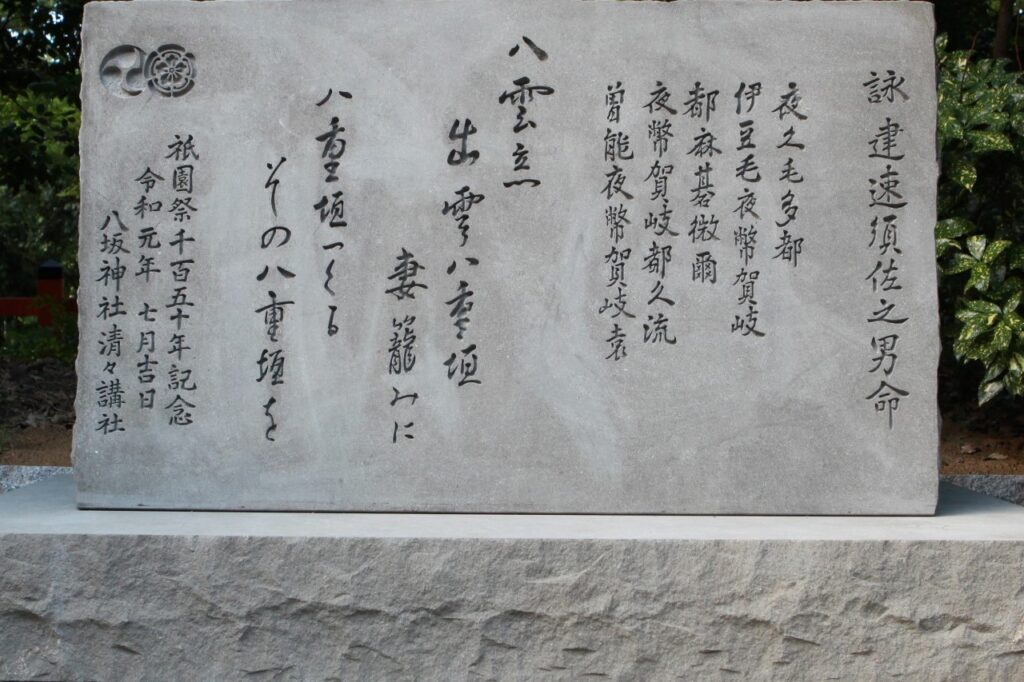
A monument to Susanoo-no-Mikoto

It is not surprising that the main gate is the south tower gate located on the main approach to the shrine, which was destroyed by fire in 1866 and reconstructed in 1879. It is said that the Gion Festival starts from this gate during the portable shrine procession and wedding ceremonies.
The stone torii gate in front of this gate is the "San-no-torii," the largest existing stone torii gate in Japan and is designated as an important cultural property. Incidentally, Ichino-torii used to be located around Takashimaya Department Store in Kawaramachi.
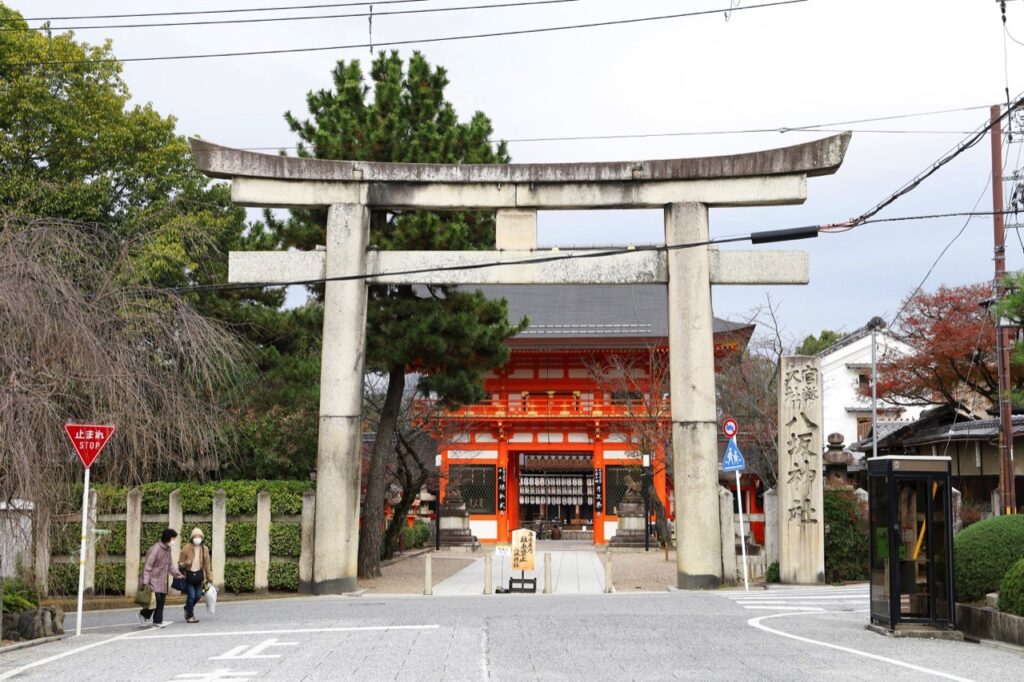
San-no-torii (third gate). In the old days, a sign reading "Kanshin-in" was hung here.

And between the stone torii gate and the south tower gate, there is a stone monument called "Tsukishita Hijinseki" that was used as a bulletin board to look for inquirers and lost children from the late Edo period to the Meiji period (1868-1912). [In addition to the one at Yasaka Shrine, the "Kikki-kiri Hyonin Ishi" at Kitano Tenmangu Shrine and the "Lost Child Signpost Ishi" at Seigan-ji Temple also served the same purpose.
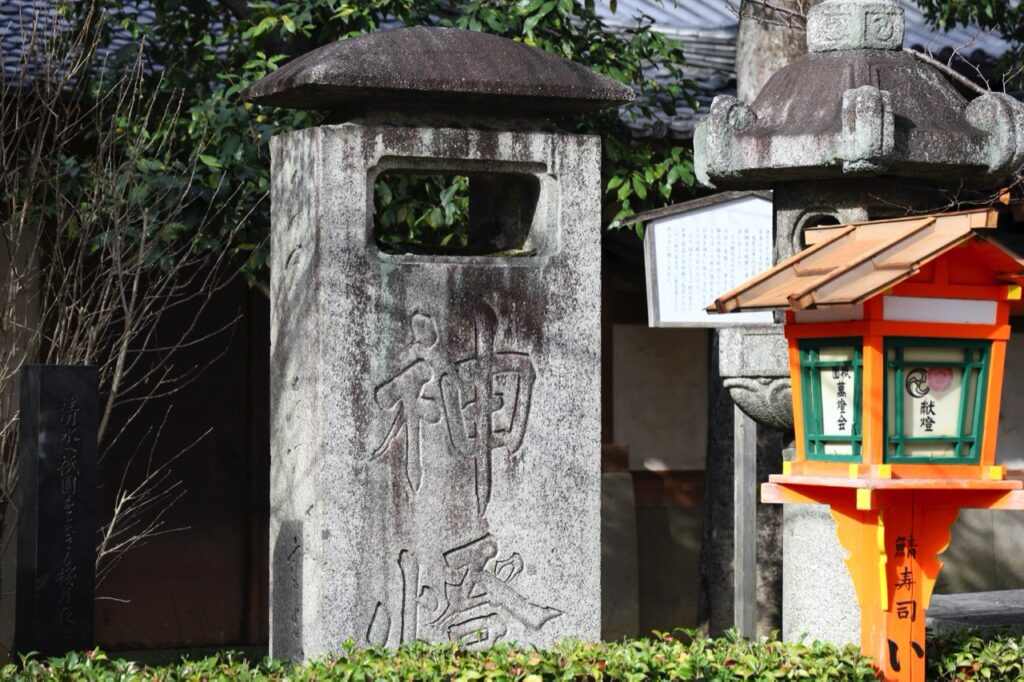
russet

The Gion Festival, one of the three major festivals in Japan, started in 869 (Jokan 11) to pray for the eradication of plague in the capital and the Yamaboko procession, one of the highlights of the festival, is registered as a UNESCO World Cultural Heritage. You can feel the Gion Festival everywhere in the precincts of the temple!
The design on the roof of the clock tower in the precincts of the temple is decorated with the head of the naginoko float! In the past, the sound of the Gion Festival music was played.
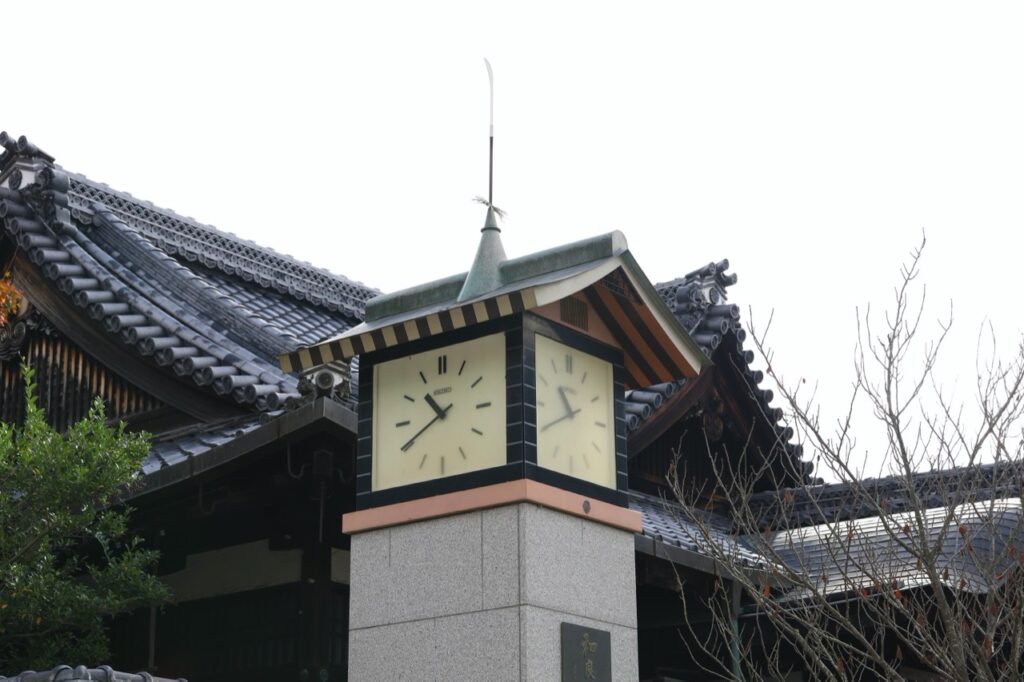
clock tower

Three portable shrines are enshrined in the portable shrine storehouse, which was built in 1928 and designated as an important cultural property. The mikoshi is carefully protected by a concrete structure that is sturdy enough to withstand fire or natural disasters.
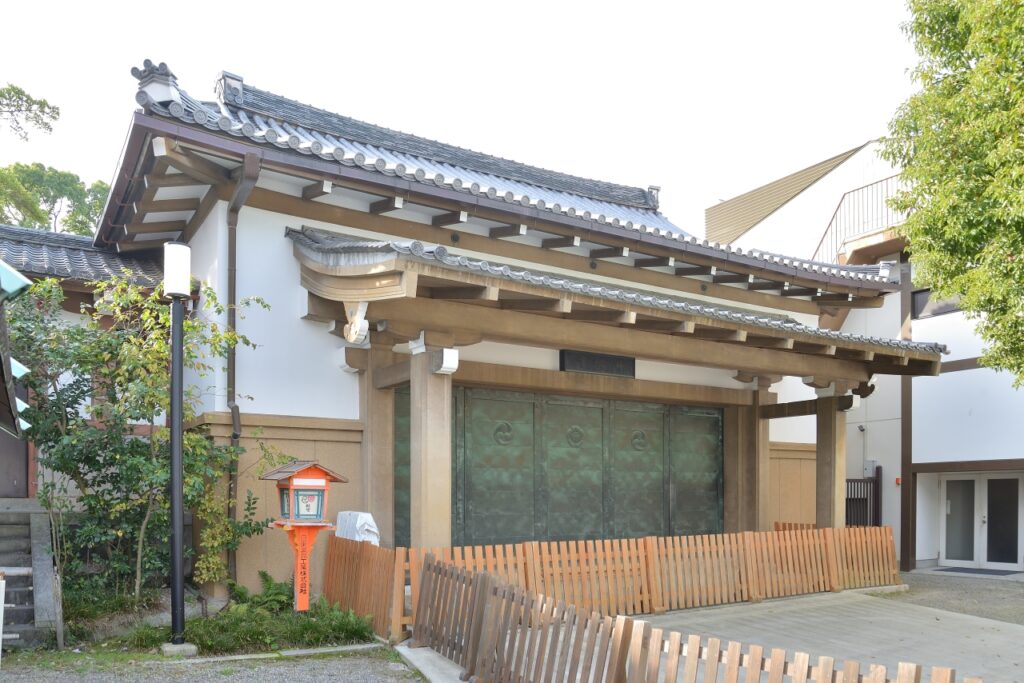
portable shrine (carried in festivals)

Furthermore, at one of the auxiliary shrines [Epidemic Shrine] located within the precincts of the shrine, Sominshorai no Mikoto is enshrined as a god to ward off epidemics. Susanoo-no-Mikoto, who was impressed by Somin-shorai-no-mikoto's hospitality despite his poverty, promised that even if an epidemic broke out, he would be spared if he put on a "thatch ring" and said, "I am a descendant of Somin-shorai-no-mikoto". This is also the origin of the phrase "I am descended from Suominshorai" written on the charms of zongzi dumplings at the Gion Festival.
At the Natsukoshi Festival held on the last day of the Gion Festival at the Ekeshinja Shrine, a large cogon grass ring is hung over the torii gate for people to pass through and pray for good health and safety.
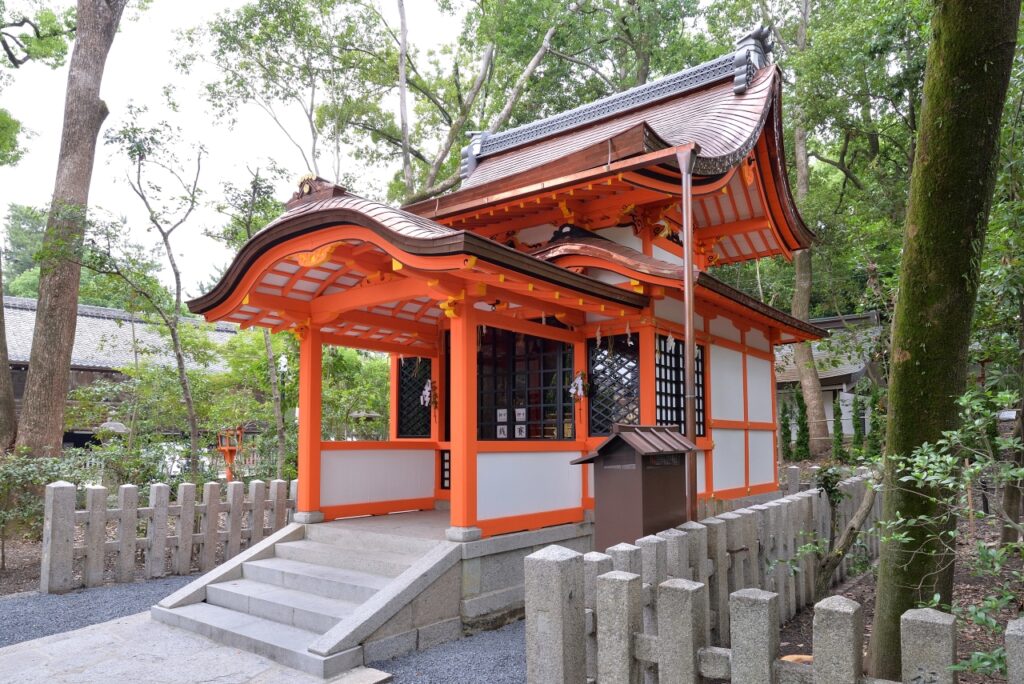
god of pestilence

Located at the foot of the mountain, [Yasaka Shrine] has long been known for its beautiful spring water, including a dragon pit in the main shrine. Legend has it that the underground water vein is connected to the Shinsen-en Garden located south of what is now Nijo Castle.
Goshinsui" next to the "Tadamori Lantern," known by the legend of Taira no Tadamori, is popularly called "strength water," and locals and people from nearby restaurants come to draw it.
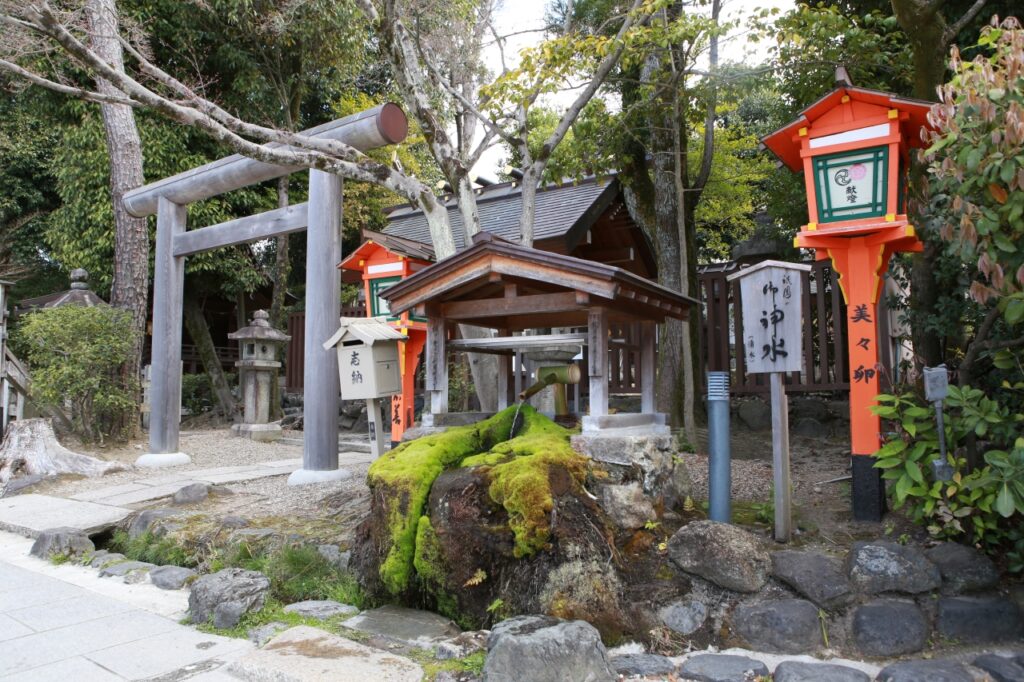
water for washing or moistening one's hands

One of the auxiliary shrines, Bigozensha, which enshrines three goddesses including Ichikishimahime no Mikoto, has a spring of beauty water, which is said to bring blessings of beauty to the body and soul if a small amount is applied to the skin. It is believed to be blessed by geiko, maiko, and other women in Gion who wish to become beautiful.
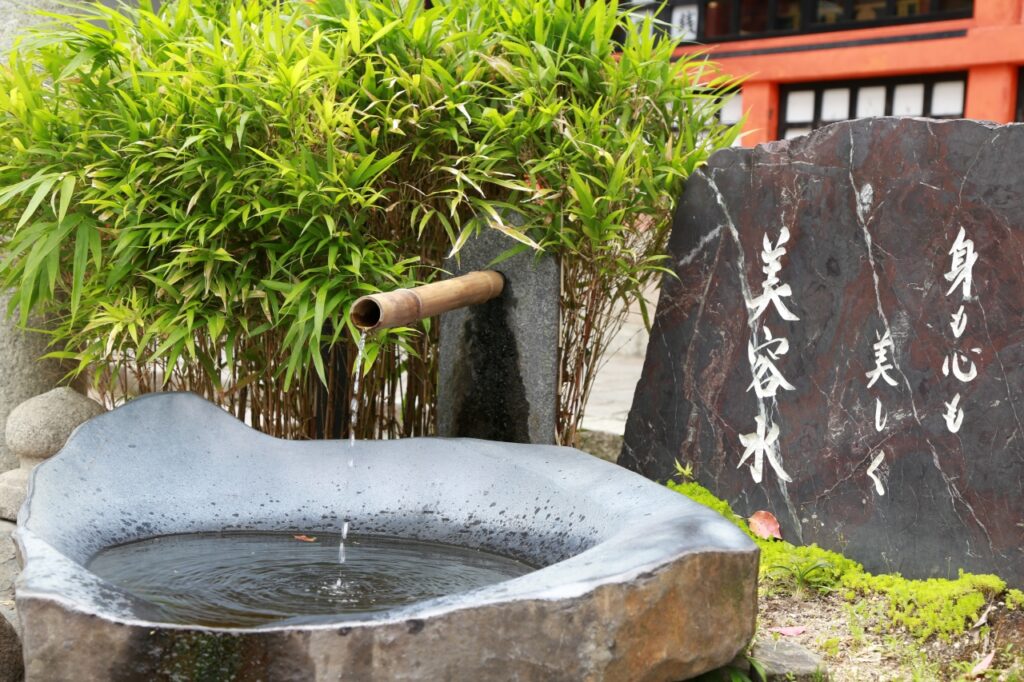
Beauty water from Migozensha

Near the red seal station, there is a vending machine that sells "gionsui" water. The water sold is said to be made from deep seawater, as Susanoo-no-Mikoto, the main deity of the shrine, is also a god of the sea. At the end of your visit, purify your body and soul with a bottle of "Gionmizu.
Did you discover anything new, such as the past when the Nishiro-mon gate, a symbol of the always bustling Gion, was moved, or an unknown aspect of Susanoo-no-Mikoto?
If you take a stroll while checking out the places mentioned in this issue, you will get a better sense of the charm and history of "Gion-san". (Editor K)
Over 600 interviews per year! An order site carefully selected by the editors who knows Kyoto and Shiga.
nowOfficial LINE friend registration500 yen OFF coupon is being issued!
Distributed every Friday morning at 8:00 am! From new restaurant information to event information that we want to share with you, We deliver articles about Kyoto that are useful to know. About 20,000 people have registered.Click here to add a friend!
 News
News Feature article
Feature article Featured event
Featured event